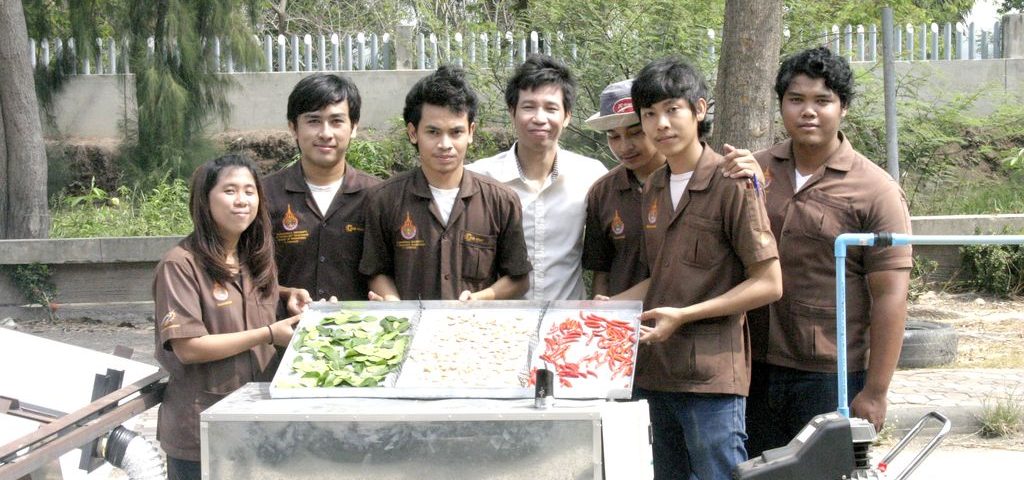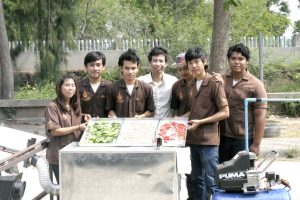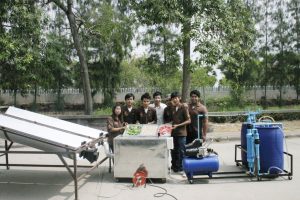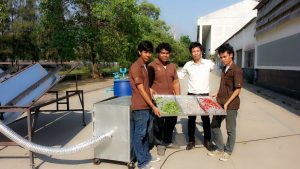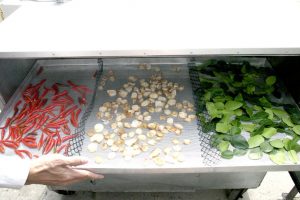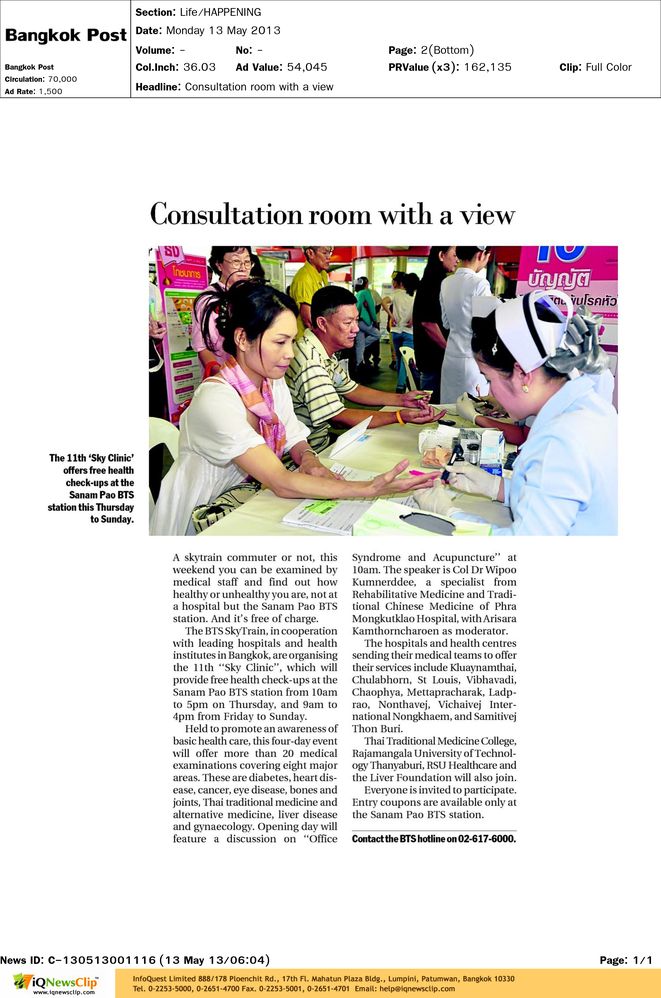
Consultation room with a view
20/05/2013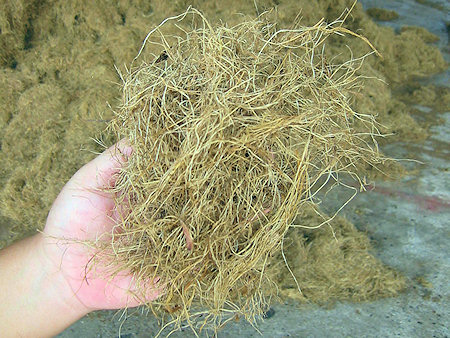
From Industrial Waste to Home Construction Material
19/07/2013In an effort to apply renewable energy to the agricultural industry, a team of six students from the Department of Agricultural Machinery Engineering, Faculty of Engineering, designed a machine that enables heat to be generated from solar cells and biogas from organic waste.
“Crop drying is an important process in farming, and in Thailand the most common method used is leaving crops to dry naturally in the sun. But this method is not practical because it takes a long time and also depends on the weather conditions. When left outdoors for a long time, crops can catch a lot of dust and sometimes molds,” said a team member. “Although there are many types of crop drying machines to choose from, whether oil-powered machines, electric machines, or gas-powered machines, the process is very costly and not environmentally friendly,” he added.
From this problem, the team decided to design a new crop drying machine that uses solar cells as well as biogas from organic waste to generate heat in the drying process. “Ninety per cent of the heat is generated from the solar cells, while the rest is from biogas. But when there’s not enough sunlight, 100% of the heat will come from biogas,” a team member said, adding that the maximum heat that the machine can generate is 80 degrees Celcius. The ability to use two energy sources means that the machine can run even when the weather conditions are not promising.
“During intense sunlight, the machine will generate 60-degree hot air to dry the crops. But when the heat from the solar cells drops below 60 degrees, the biogas system will be activated to bring the temperature back to 60,” the team rep resentative said.
From experimental runs, comparing the crops dried using this machine with those dried using the sunlight, the machine-dried kaffir-lime leaves contained 11 per cent humidity after 5 hours, a decrease from 61 per cent. On the contrary, the sun-dried leaves could not reach this same reduction in humidity after one full day of drying in the sun. The results demonstrated a high level

